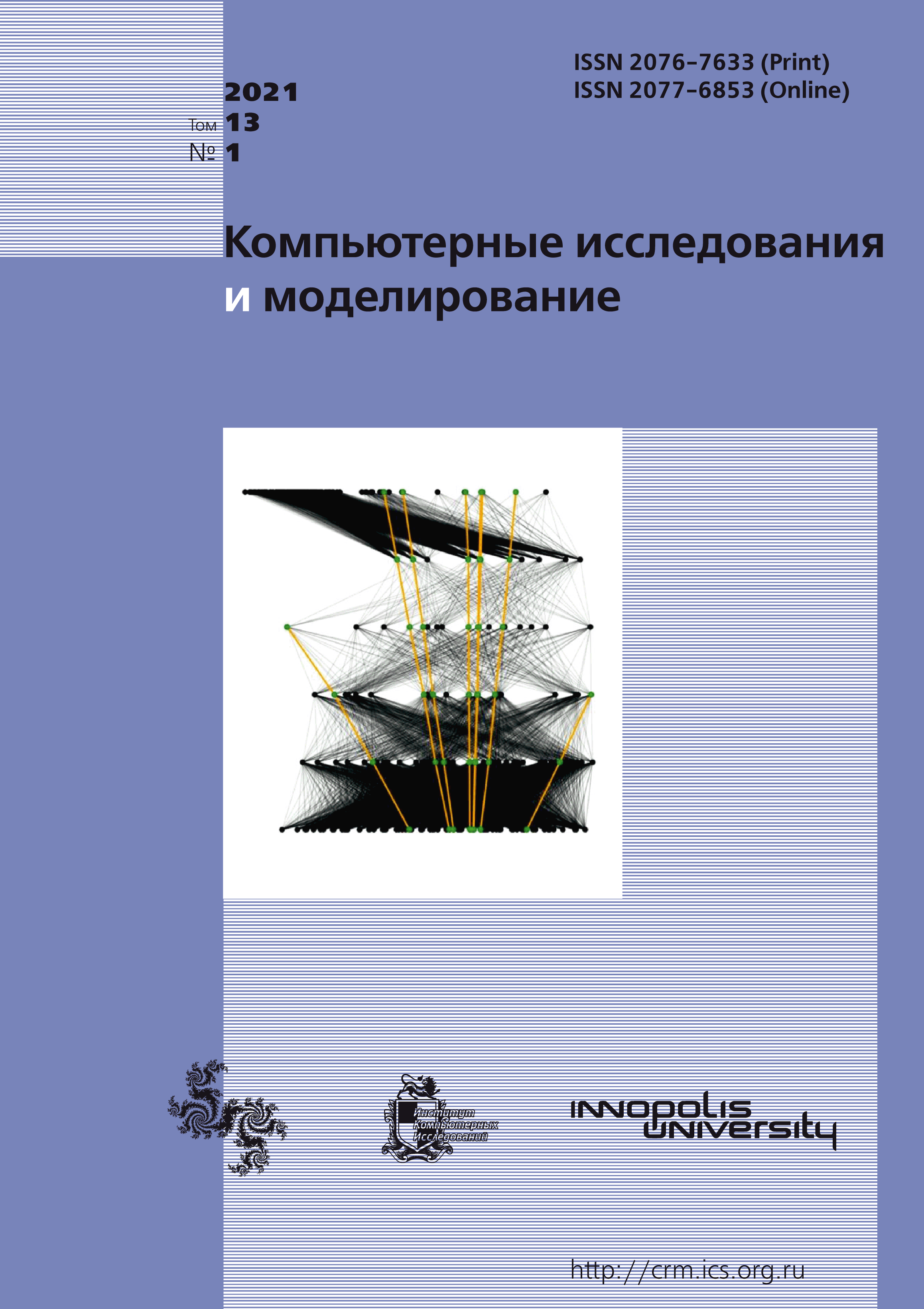All issues
- 2025 Vol. 17
- 2024 Vol. 16
- 2023 Vol. 15
- 2022 Vol. 14
- 2021 Vol. 13
- 2020 Vol. 12
- 2019 Vol. 11
- 2018 Vol. 10
- 2017 Vol. 9
- 2016 Vol. 8
- 2015 Vol. 7
- 2014 Vol. 6
- 2013 Vol. 5
- 2012 Vol. 4
- 2011 Vol. 3
- 2010 Vol. 2
- 2009 Vol. 1
Investigation of the averaged model of coked catalyst oxidative regeneration
 pdf (408K)
pdf (408K)
The article is devoted to the construction and investigation of an averaged mathematical model of an aluminum-cobalt-molybdenum hydrocracking catalyst oxidative regeneration. The oxidative regeneration is an effective means of restoring the activity of the catalyst when its granules are coating with coke scurf.
The mathematical model of this process is a nonlinear system of ordinary differential equations, which includes kinetic equations for reagents’ concentrations and equations for changes in the temperature of the catalyst granule and the reaction mixture as a result of isothermal reactions and heat transfer between the gas and the catalyst layer. Due to the heterogeneity of the oxidative regeneration process, some of the equations differ from the standard kinetic ones and are based on empirical data. The article discusses the scheme of chemical interaction in the regeneration process, which the material balance equations are compiled on the basis of. It reflects the direct interaction of coke and oxygen, taking into account the degree of coverage of the coke granule with carbon-hydrogen and carbon-oxygen complexes, the release of carbon monoxide and carbon dioxide during combustion, as well as the release of oxygen and hydrogen inside the catalyst granule. The change of the radius and, consequently, the surface area of coke pellets is taken into account. The adequacy of the developed averaged model is confirmed by an analysis of the dynamics of the concentrations of substances and temperature.
The article presents a numerical experiment for a mathematical model of oxidative regeneration of an aluminum-cobalt-molybdenum hydrocracking catalyst. The experiment was carried out using the Kutta–Merson method. This method belongs to the methods of the Runge–Kutta family, but is designed to solve stiff systems of ordinary differential equations. The results of a computational experiment are visualized.
The paper presents the dynamics of the concentrations of substances involved in the oxidative regeneration process. A conclusion on the adequacy of the constructed mathematical model is drawn on the basis of the correspondence of the obtained results to physicochemical laws. The heating of the catalyst granule and the release of carbon monoxide with a change in the radius of the granule for various degrees of initial coking are analyzed. There are a description of the results.
In conclusion, the main results and examples of problems which can be solved using the developed mathematical model are noted.
Copyright © 2021 Gubaydullin I.M., Yazovtseva O.S.
Indexed in Scopus
Full-text version of the journal is also available on the web site of the scientific electronic library eLIBRARY.RU
The journal is included in the Russian Science Citation Index
The journal is included in the RSCI
International Interdisciplinary Conference "Mathematics. Computing. Education"






